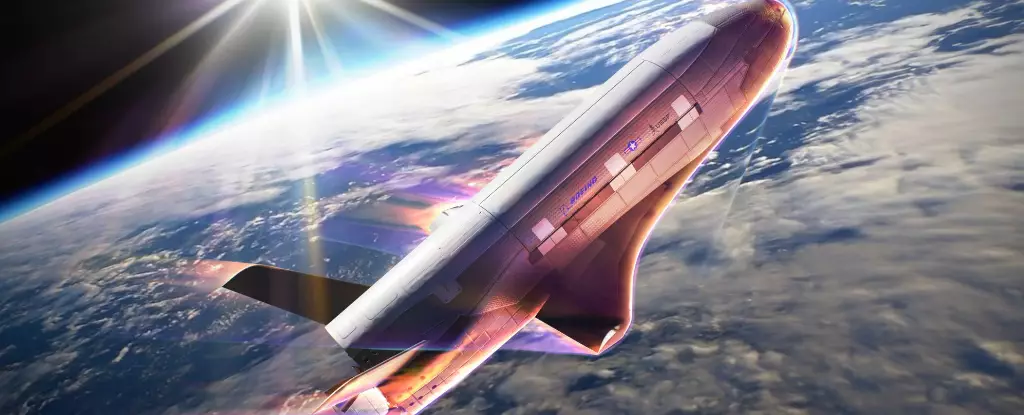Since it first launched into space in 2011, the X-37B Orbital Test Vehicle (OTV) has been shrouded in secrecy and intrigue. Developed by Boeing and overseen by the United States Space Force (USSF), this cutting-edge, unmanned, reusable space plane is specifically crafted for operations in Low-Earth Orbit (LEO), situated anywhere from 240 to 800 kilometers (150 to 500 miles) above the planet’s surface. The primary mission of the X-37B extends beyond mere exploration; it is designed to test and refine reusable spacecraft technologies, paving the way for extensive long-term space initiatives.
On December 29, 2023, the X-37B commenced its seventh mission, dubbed OTV-7, marking yet another chapter in its storied history. This mission is particularly noteworthy as it focuses on investigating the impacts of space radiation while also evaluating Space Domain Awareness (SDA) methodologies. The craft is set to perform an array of advanced maneuvers, which includes maneuvering closely to Earth’s upper atmosphere, a tactic known as “aerobraking.” This innovative technique allows the vehicle to reduce speed and subsequently lower its orbit without consuming significant fuel.
This mission symbolizes a monumental first for the X-37B, offering enhanced stealth capabilities. By executing low, undetected passes over Earth’s surface, the spacecraft can potentially circumvent surveillance from adversarial nations. The USSF emphasizes that these advancements are informed by experience gleaned from previous missions, illustrating the importance of ongoing research in orbit.
Aerobraking is not a novel concept in space travel but is often associated with missions to other celestial bodies. NASA’s Mars Global Surveyor, which operated in the late 1990s, first employed this technique to adjust its position in Martian orbit by utilizing its solar panels effectively as wings. More recent missions, including Mars Odyssey, Mars Reconnaissance Orbiter, and ESA’s ExoMars Trace Gas Orbiter, have all successfully implemented aerobraking strategies, demonstrating its efficacy in space maneuvering.
The recent incorporation of aerobraking in the X-37B’s operations showcases the USSF’s commitment to marrying traditional aerospace techniques with contemporary goals in national security. Secretary of the Air Force Frank Kendall underscores the significance of these maneuvers, positioning them as a testament to the United States’ innovative spirit amidst an evolving and competitive space landscape.
One of the fascinating aspects of the X-37B remains its ability to execute unpredictable orbital paths, as articulated by former USAF Secretary Heather Wilson during a discussion at the Aspen Security Forum in 2019. The X-37B’s unique flight patterns effectively obscure its movements from adversaries, creating a strategic advantage. Observers like Jonathan McDowell, an astronomer at Harvard-Smithsonian, have noted that the unpredictability owing to its ability to change orbital timing complicates tracking efforts for potential foes, thereby reshaping the parameters of space surveillance and defense tactics.
The implications of these capabilities are manifold. Not only does the X-37B represent a significant advancement in stealth technology, but it also offers potential methods of deterring hostile actions and ensuring national security without revealing operational specifics.
As the X-37B continues its mission, the framework for its future operations is expanding. Beyond conducting experiments, such as the intriguing “Seeds-2” project aimed at examining radiation effects on biological specimens, the X-37B is poised to explore even deeper into the realm of Space Domain Awareness technologies. These efforts underscore an intention to enhance readiness and response capabilities within complex operational environments.
Moreover, upon the completion of its mission, the X-37B plans to eject parts of its service module in alignment with established standards to mitigate space debris, marking a step towards responsible space exploration. The eventual deorbiting and return of the spacecraft will conclude yet another chapter, but its legacy will undoubtedly inform future innovations and national security strategies.
The X-37B has not just been an impressive technological feat; it represents a commitment to pioneering advancements in space exploration and security. As the USSF continues to reveal more about the vehicle’s capabilities and long-term objectives, the world watches—both in awe of its engineering excellence and keenly aware of its strategic implications. With its innovative maneuvers and evolving missions, the X-37B stands as a powerful symbol of America’s aspirations in the final frontier, heralding a new era of possibilities that blend science, technology, and national security into a cohesive vision for the future.


Leave a Reply